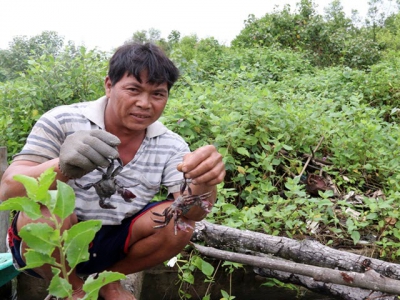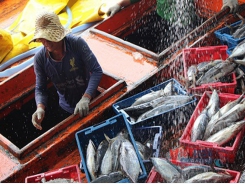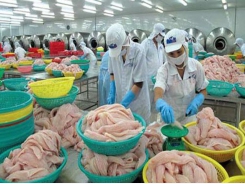Breeding aquatic species in mangrove forests reaps high income

KIÊN GIANG – Breeding aquatic species in mangrove forests in Kiên Giang Province’s An Biên and An Minh districts has increased the income of households that have been allocated forestland.
Breeding ba khía (Sesarma mederi), a mangrove crab species in a mangrove forest in An Biên District’s Nam Thái Commune in Kiên Giang Province. – VNA/VNS Photo Lê Sen
The Cửu Long (Mekong) Delta province has allocated forest land in the two coastal districts for organisations and households to protect and manage.
Nguyễn Việt Bình, deputy chairman of the An Biên People’s Committee, said that households had earned their main livelihood from catching fish, shrimp and other aquatic species.
However, the quantity of aquatic species in the wild had declined and forest-allocated households had faced difficult lives and the protection of allocated forests, he said.
To protect the allocated forests, the province’s People’s Committee in 2011 decided to allow organisations and households to use 30 per cent of the allocated forest land to breed aquatic species and grow other crops, while 70 per cent of the allocated forest land must be used to grow forests.
The province provided soft loans and farming techniques for forest-allocated households to breed aquatic species.
Nguyễn Văn Dồi, who was allocated forest land in An Biên’s Nam Thái Commune in 1992, said the province’s Fisheries and Agriculture Extension Centre taught him how to breed aquatic species together, including shrimp, crab, blood cockles and fish. This helped him escape poverty.
Households breeding aquatic species in mangrove forests do not need to feed because the species eat natural food.
According to Lê Ngọc Tùng, deputy chairman of the An Minh People’s Committee, the district has 726 households allocated forest land for protection. Each household is allocated between 1 – 7 hectares of forest land and is allowed to use 30 per cent of the allocated forest land to breed aquatic species.
Households who breed blood cockles in mangrove forests can earn a profit of VNĐ70 – 160 million (US$3,000 – 6,900) per hectare a year, he said.
Besides breeding aquatic species in mangrove forests, households in An Minh also breed clams and other bivalve mollusks in 6,300ha of mud flats.
The coastal mangrove forests of An Biên and An Minh have a length of 61km and cover more than 4,000ha, including the buffer forest area and the core forest area. The buffer forest area accounts for nearly 3,000ha where spotted mangrove is grown, while the main forest area has mostly grey mangrove.
Có thể bạn quan tâm
Phần mềm

Phối trộn thức ăn chăn nuôi

Pha dung dịch thủy canh

Định mức cho tôm ăn

Phối trộn phân bón NPK

Xác định tỷ lệ tôm sống

Chuyển đổi đơn vị phân bón

Xác định công suất sục khí

Chuyển đổi đơn vị tôm

Tính diện tích nhà kính

Tính thể tích ao hồ




 Biển Đông Seafood Company builds the organic pangasius…
Biển Đông Seafood Company builds the organic pangasius…  Fresh insights into the $26.7 billion shrimp sector
Fresh insights into the $26.7 billion shrimp sector